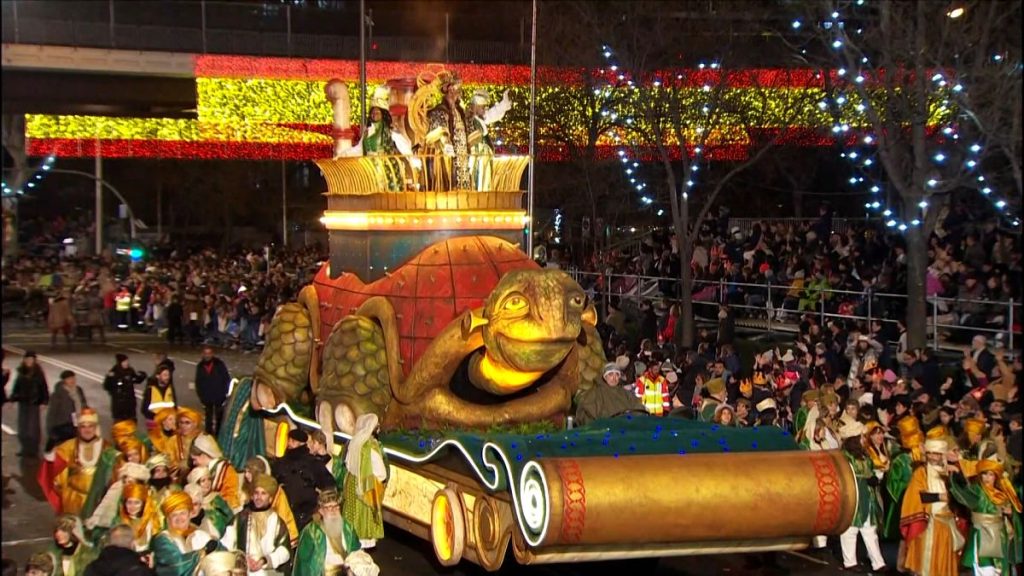The Epiphany, celebrated on January 6th, marks the culmination of the Christmas season in Spain, commemorating the biblical account of the Three Kings, Caspar, Balthazar, and Melchior, journeying to Bethlehem to present gifts to the infant Jesus. This deeply ingrained tradition, resonating across both Spain and Latin America, transforms city streets into vibrant spectacles of festive joy, drawing massive crowds eager to witness the reenactment of this sacred narrative. The celebration is often referred to as the “Cabalgata de los Reyes Magos,” which translates to the “Cavalcade of the Magi.”
Central to the Epiphany celebrations are the elaborate parades, recreating the Three Kings’ journey. Giant, intricately crafted puppets, often depicting biblical characters and fantastical creatures, animate the procession, adding a touch of whimsical magic to the event. Luminous figures, adorned with twinkling lights, further enhance the enchanting atmosphere, casting a warm glow upon the assembled crowds. The Three Kings themselves, portrayed by actors in richly adorned costumes, ride atop ornate floats or “royal chariots,” embodying the regal majesty of these biblical figures.
Adding to the festive atmosphere is the tradition of the Three Kings scattering candy throughout the parade route. Children, their eyes gleaming with anticipation, eagerly scramble to collect the sweet treats, their laughter intermingling with the joyful cheers of the crowd. This playful element injects a sense of childlike wonder into the celebration, making it an unforgettable experience for families. The distribution of candy symbolizes the generosity and abundance associated with the arrival of the Magi. The act of receiving these treats directly from the hands, or rather, the floats of the Kings, further intensifies the magical aura surrounding the celebration.
The anticipation leading up to the Epiphany mirrors the Christmas Eve anticipation in other cultures. Children eagerly await the arrival of the Three Kings, much like their counterparts await Santa Claus. The Kings, according to tradition, leave gifts for children who have been well-behaved throughout the year. This gift-giving tradition is deeply embedded within the cultural fabric of Spain and many Latin American countries, serving as a cherished element of the holiday season. Families often gather on the eve of Epiphany, sharing a special meal and setting out shoes or other receptacles for the Kings to fill with presents.
The cultural significance of the Epiphany in Spain extends beyond the festive parades and the exchange of gifts. It represents a deeply rooted religious observance, marking the manifestation of Christ to the Gentiles, as symbolized by the Three Kings. This theological significance underscores the universal message of Christianity, highlighting the inclusive nature of faith. The Epiphany serves as a powerful reminder of the spiritual dimension of the Christmas season, imbuing the celebrations with a sense of reverence and tradition.
Furthermore, the Epiphany celebrations in Spain, as well as in many Latin American countries, provide a platform for the expression of cultural heritage. The parades often showcase regional traditions, with variations in costumes, music, and the overall presentation of the event. These variations reflect the rich tapestry of cultural influences woven into the fabric of Spanish and Latin American societies. The Epiphany thus serves as a vibrant display of cultural identity, celebrating the unique traditions that distinguish different communities. The vibrant and lively celebrations strengthen community bonds, fostering a shared sense of belonging and joy. This shared experience transcends generations, ensuring the continuation of these cherished traditions for years to come.














